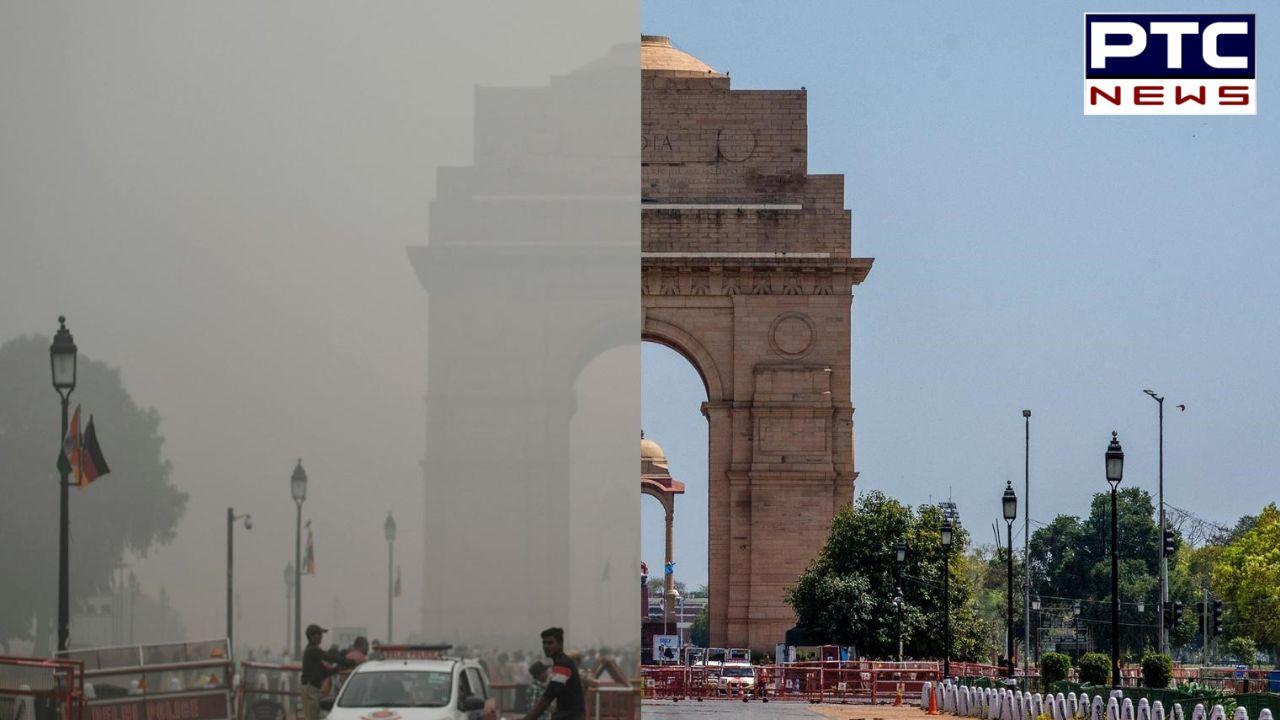
Delhi choked: Firecracker ban defied, air quality plummets after Diwali
Delhi air pollution: The air quality in Delhi took a significant hit on Friday morning, following widespread defiance of the firecracker ban during Diwali celebrations on Thursday night. The incessant bursting of crackers led to high noise pollution levels and engulfed the city in a thick layer of smoke, severely impacting the air quality.
Data from the System of Air Quality and Weather Forecasting and Research (SAFAR) indicated that the Air Quality Index (AQI) in the capital surged to 359 at 6.30 am, falling into the “very poor” category. In comparison, the AQI on Diwali morning stood at 328, highlighting a marked deterioration in air quality overnight.
The AQI scale classifies levels as follows: 0-50 (good), 51-100 (satisfactory), 101-200 (moderate), 201-300 (poor), 301-400 (very poor), 401-450 (severe), and above 450 (severe-plus). Most of Delhi's 40 monitoring stations recorded air quality in the “very poor” category. Anand Vihar and RK Puram reported some of the worst AQI readings, peaking at 395.
Other areas with critically high AQI levels included Burari Crossing (394), Sonia Vihar (392), Punjabi Bagh (391), North Campus (390), Bawana (388), Jahangirpuri (387), Rohini (385), Ashok Vihar (384), and Nehru Nagar (381). These readings underscore the severity of the pollution crisis, exacerbated by the non-compliance with the firecracker restrictions.
The Indian Institute of Tropical Meteorology (IITM) in Pune has forecast that Delhi's air quality will likely remain in the “very poor” category (AQI between 300 and 400) through Friday. The Delhi government had mobilised extensive resources to enforce the firecracker ban, with Environment Minister Gopal Rai stating that 377 teams had been deployed to monitor compliance. Additionally, senior Delhi Police officials instructed deputy commissioners of police (DCPs) to set up dedicated teams in each district to prevent firecracker usage.
Despite these measures, many residents continued to burst firecrackers well into the night, resulting in severe pollution levels that have alarmed environmental experts and health authorities. The city had experienced relatively better air quality on Diwali day last year, with the average AQI recorded at 218—the best in eight years—when the festival fell on November 12. However, the celebrations this year have reversed that trend, bringing back concerns about the city's air pollution crisis.
#WATCH | Delhi: A thin layer of smog engulfs the National Capital as the air quality continues to deteriorate.
As per the CPCB, the AQI of the area is 317, in the 'very poor' category.
(Visuals from India Gate) pic.twitter.com/nKvFMOPZrd — ANI (@ANI) November 1, 2024
Apart from local factors like firecracker emissions, Delhi's pollution woes are often compounded by stubble burning in neighbouring states. During October and November, farm fires from Haryana and Punjab contribute significantly to the smog in the capital. The post-harvest stubble burning period remains a critical challenge, despite repeated efforts to curb the practice.
#WATCH | Delhi skyline on #Diwali shows the city illuminated in colourful lights. pic.twitter.com/BRvtW3wsRz — ANI (@ANI) October 31, 2024
The hazardous air quality has led the authorities to implement stage two of the Graded Response Action Plan (GRAP), aimed at controlling pollution levels. With residents experiencing hazardous air for weeks, the focus has once again shifted to more stringent enforcement and long-term measures to mitigate pollution.
- With inputs from agencies
